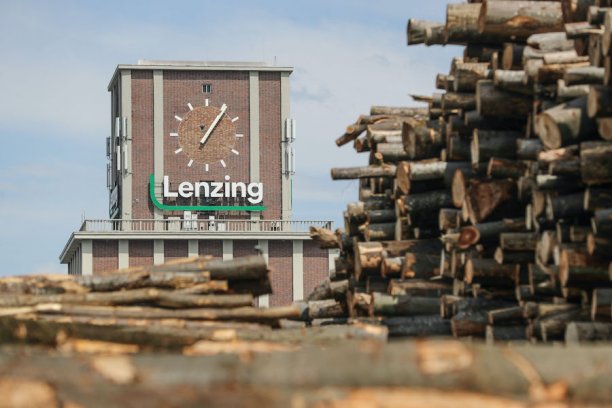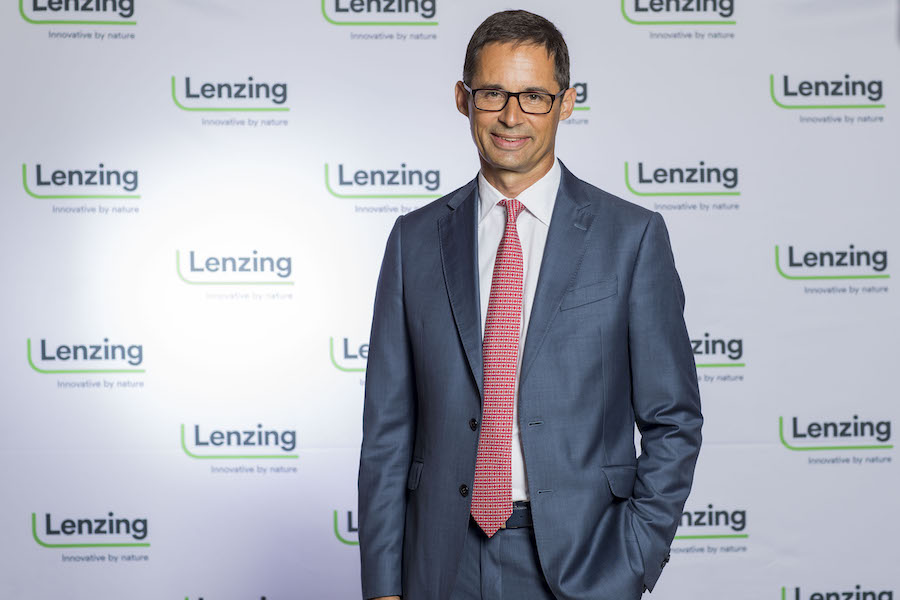
Lenzing mothballs lyocell expansion in Alabama
The global environmental non-profit CDP honours Lenzing with a double ‘A’ score for its leading performance in environmental transparency and action.

8th December 2020
Knitting Industry
|
Lenzing, Austria
The Lenzing Group has been recognized by the global environmental non-profit CDP, securing a place on its prestigious ‘A List’ for tackling climate change, as well as acting to protect forests – two of the three environmental themes covered by CDP.
CDP’s annual environmental disclosure and scoring process is widely recognized as the gold standard of corporate environmental transparency, Lenzing reports. This year, more than 5,800 companies were scored based on data submitted through CDP’s questionnaires.
Through significant demonstrable action on climate and deforestation risks, Lenzing is leading on corporate environmental ambition, action and transparency worldwide, the company says. “We are particularly proud to be the only first-time discloser who has achieved an ‘A’ score for tackling climate change and acting to protect forests. The double ‘A’ score reconfirms our long-term sustainability strategy and is an exciting acknowledgement of our efforts on transparency as well as sustainable raw material sourcing”, says Stefan Doboczky, CEO of the Lenzing Group.

Key actions to tackle climate change
In 2019, Lenzing became the world’s first producer of wood-based cellulosic fibers making a strategic commitment to dramatically reducing its carbon footprint and cutting its emissions per ton of product by 50 percent by 2030, says Lenzing. This target has been scientifically verified and approved by the Science Based Targets initiative, adds Lenzing and furthermore, by the year 2050, Lenzing is aiming for Net-Zero emissions.
Sustainable fibre innovations such as the introduction of the first Tencel branded CarbonNeutral fibers and a blockchain-enabled traceability platform are an integral part of Lenzing’s sustainability strategy since they help to combat climate change and trigger a new level of transparency along the entire value chain, the company says. In addition, pioneering technologies like Refibra and Eco Cycle contribute to a circular economy by combining the environmentally responsible lyocell fibre production with the upcycling of cotton waste materials, it adds.
The implementation of a pulp plant in Brazil and a state-of-the-art lyocell fibre production site in Thailand, which is designed as a carbon neutral plant, represent two further important milestones in Lenzing’s carbon neutrality strategy. The pulp plant in Brazil will feed more than 40% of the electricity generated as ‘green energy’ into the public grid.
Key actions to protect forests
Lenzing says it is proud of its decades-long clean record of sustainable wood sourcing, evidenced by its long-standing credible commitment to wood certifications. The company’s commercial wood sources are 100% either certified by FSC 1 or PEFCTM2 or controlled in line with FSC standards. The combination of a stringent wood sourcing policy and the dedicated commitment to the CanopyStyle Initiative confirms that the production of Lenzing’s wood-based cellulosic fibers does not contribute to deforestation, the company informs.
Taking the lead on environmental transparency and action is one of the most important steps businesses can make and is even more impressive in this challenging year marked by COVID-19
Additionally, Lenzing initiated a social impact and afforestation project in Albania. The forest areas in this country are in the greatest need for improvement in the European region, Lenzing explains. The project addresses the most urgent issues that society will have to tackle in the upcoming 10 years, namely land degradation, biodiversity loss, deforestation and climate change, it adds.
Paul Simpson, CEO of CDP,comments: “We extend our congratulations to all the companies on this year’s ‘A List’. Taking the lead on environmental transparency and action is one of the most important steps businesses can make and is even more impressive in this challenging year marked by COVID-19. The scale of the risk to businesses from climate change, deforestation and water insecurity is enormous, and we know the opportunities of action far outweigh the risks of inaction. Leadership from the private sector will create an ‘ambition loop’ for greater government action and ensure that global ambitions for a net zero sustainable economy become a reality. Our ‘A List’ celebrates those companies who are preparing themselves to excel in the economy of the future by taking action today.”
A List – process and methodology
In 2020, over 515 investors with over US$106 trillion in assets and 150+ major purchasers with US$4 trillion in procurement spend requested companies to disclose data on environmental impacts, risks and opportunities through CDP’s platform. Over 9,600 responded – the highest ever.
A detailed and independent methodology is used by CDP to assess these companies, allocating a score of A to D- based on the comprehensiveness of disclosure, awareness and management of environmental risks and demonstration of best practices associated with environmental leadership, such as setting ambitious and meaningful targets. Those that don’t disclose or provided insufficient information are marked with an F.
CDP’s scoring for forests is conducted through the lens of the four commodities that cause most deforestation: timber products, cattle products, soy and palm oil. Companies need to score an A on at least one of these forest- risk commodities to earn a place on the Forests ‘A List’.
The full list of companies that made this year’s CDP ‘A List’ is available at the link below, along with other publicly available company scores.

Business intelligence for the fibre, textiles and apparel industries: technologies, innovations, markets, investments, trade policy, sourcing, strategy...
Find out more